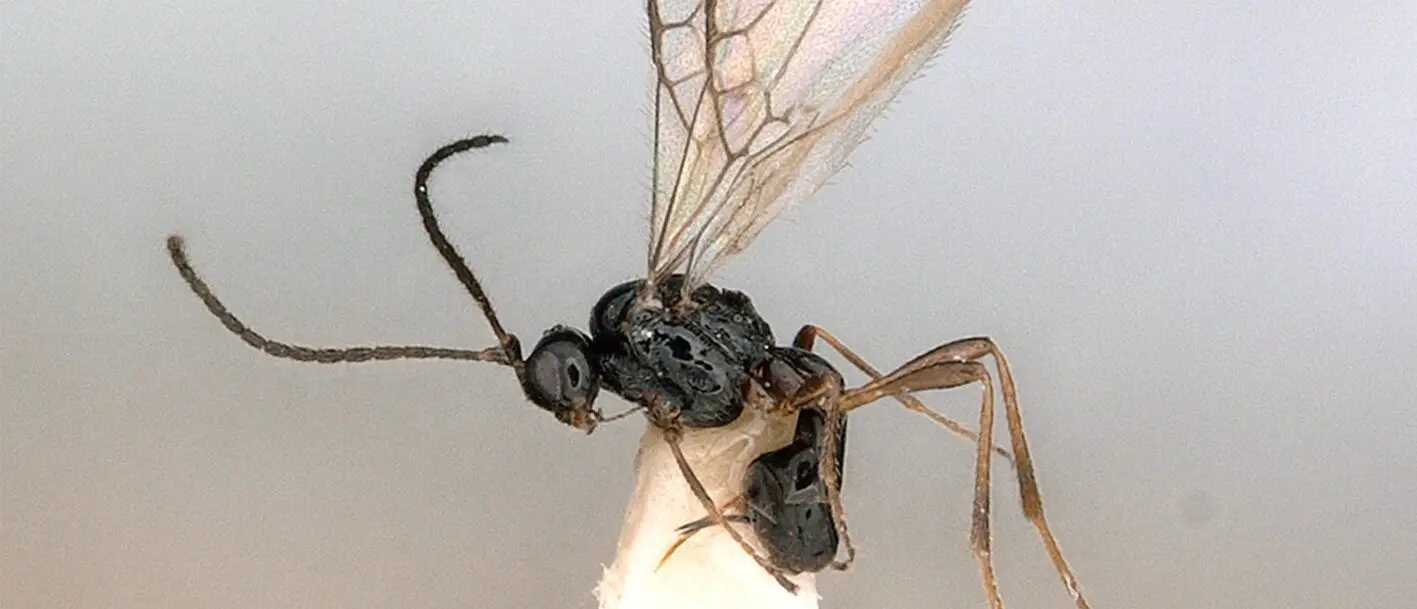Ein Beitrag von Francisco Javier Peris–Felipo, José D. Gilgado (Universität Alcalá, Spanien), Sergey A. Belokobylskij (Russian Academy of Sciences St Petersburg, Russland) & Bruno Baur (Universität Basel)
7. Mai 2024
Titelbild: Schlupfwespe, José D. Gilgado
Erster Nachweis in Europa: Die Schlupfwespe Aspilota umbrosa
Forschende haben im Schweizerischen Nationalpark (SNP) eine Art entdeckt, die bis jetzt nur von der Halbinsel Kamtschatka in Russland bekannt war. Dabei handelt es sich um die Schlupfwespe Aspilota umbrosa. Dies ist nicht nur eine neue Art für den SNP, sondern auch für ganz Europa. Die Schlupfwespe wurde im Jahr 2020 auf dem Blockgletscher Val Sassa im SNP auf einer Höhe von 2250 m ü.M. in einer eingegrabenen Insektenfalle gefangen. Die Körperlänge beträgt 2 mm.
Noch ist unklar, wie diese Art nur gerade an zwei 8600 km voneinander entfernten Stellen auf der Erde bestimmt werden konnte. Grundsätzlich ist es möglich, dass es dazwischen viele andere Populationen hat, die bis heute nicht beschrieben wurden. Es ist aber auch möglich, dass die Art ein Eiszeitrelikt ist und mit dem Abschmelzen der Gletscher von der nordöstlichen Population getrennt wurde. Eine vergleichende genetische Analyse war bis jetzt leider nicht möglich. Aspilota umbrosa ist der erste publizierte Nachweis einer Arthropodenart, die in der Geröllschicht eines Blockgletschers in den Schweizer Alpen lebt.
Literatur:
- Peris-Felipo, F.J., Gilgado, J.D., Belokobylskij S.A. & Baur, B. (2024): From a volcanic area on the Kamchatka peninsula (Northeast Asia) to a rock glacier in the Swiss Alps: a new record of Aspilota umbrosa Belokobylskij, 2007 (Hymenoptera, Braconidae), Revue suisse de Zoologie (March 2024) 131(1): 121-130. https://www.researchgate.net/publication/


